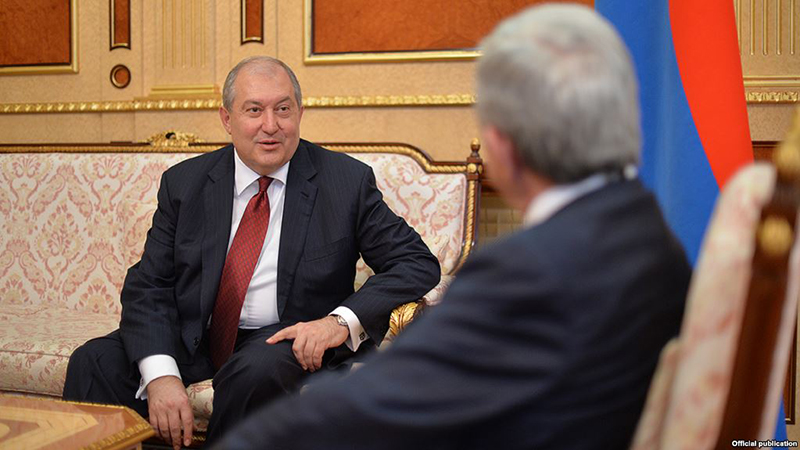By Serouj Aprahamian
On February 27, 1988, Armenians living in the city of Sumgait were subject to a brutal pogram by rampaging mobs. These massacres spilled into the towns of Baku and Kirovobad, as well. Two years later, Armenian civilians living in the Azerbaijani capital of Baku were likewise attacked for seven days straight.
Over 200,000 Armenians were forced to flee and find refuge in Armenia as a result of these incidents and the ensuing war in Nagorno-Karabakh. With the trauma of massacre in their minds and little to nothing to their name, they were forced to start again in the newly independent republic of Armenia.
Mariam Abrahamyan, a resident of the border village of Gomk, is one such survivor. Originally from Baku, she fled with her husband and newborn baby, settling in Gomk in the summer of 1988.
“My husband was a taxi driver in Baku,” she explains. “Two men sat in his cab one day and he overhead them talking about Sumgait, saying the same fate awaited Armenians in Baku. He knew from that day on that if we stayed, we would be struck down too.”
With nowhere to hide, the family fled the country with other refugees. They arrived in Armenia without a cent in their pocket. They didn’t even know how to speak Armenian.
They were given a small house by the government, but transitioning from an urban life to a rural one was a major challenge in itself. The family had to learn farming, animal husbandry, and adapt to the hardships of the countryside.
“The important thing is that they didn’t destroy us,” says Abarahamyan. “They weren’t able to kill us.”
Like Abrahamyan, the majority of families in Gomk are refugees from Azerbaijan. The will to survive and stick together as a community is what got them through the “dark years” of the early 1990’s and allowed them to rebuild from the rubble of war.
“Our happiness and strength comes from the fact that people assist each other here [in Gomk],” says Abrahamyan. “Nobody’s life is easy but all you have to do is pick up the phone and they’ll be there to help you.”
In 2012, Abrahamyan joined an Oxfam-sponsored initiative to form an agricultural cooperative in the village. Together with other female farmers, she operates a greenhouse that grows tomatoes, green beans, cucumbers and other crops. The all-female cooperative is run democratically as a social enterprise, which allocates a percentage of its annual funds to social projects in the community.
The greenhouse has proven to be an efficient source of income and empowerment for the residents of Gomk. By pooling their resources together, they are seeing that they can develop economies of scale and better resolve the socio-economic problems in their village.
In turn, the solidarity and success of the cooperative has reinforced Abrahamyan’s commitment to the land. As someone who has felt the trauma of massacre and ethnic cleansing, she is quick to emphasize the security of living in her homeland.
“This is where I feel safe and welcome,” explains Abrahamyan when asked if she has ever thought about leaving the country. “No one in the village has any negative intent towards us. Everyone in this village is like a family. I feel secure here.”
The story of Abrahamyan and the female farmers of Gomk is one of overcoming the carnage of massacre with the will to persevere and rebuild. What’s more, Abrahamyan and fellow cooperative members are leading the way in offering an alternative mode of development for the country—one based on solidarity and sustainability, rather than individualism and exploitation.
Twenty-seven years after the Sumgait pogroms, it is important not only to remember the suffering caused in those horrific days but also the remarkable perseverance of those who survived.
Those interested in lending a hand to Mariam and the Gomk Agricultural Cooperative in their current drive to purchase a mini-tractor for their greenhouse can make a secure online donation today.
******
Photo: The majority of the members in the all-female Gomk Agricultural Cooperative are refugees who fled from Azerbaijan and resettled in Armenia during independence.










